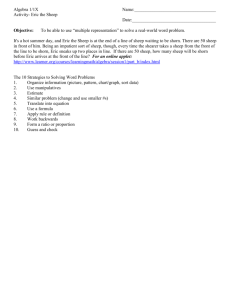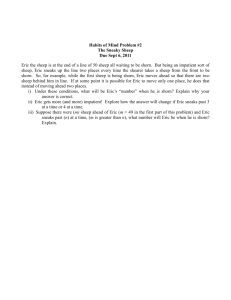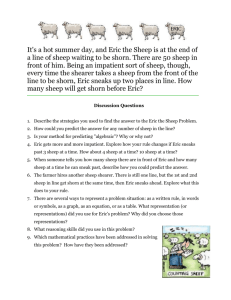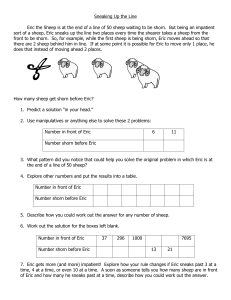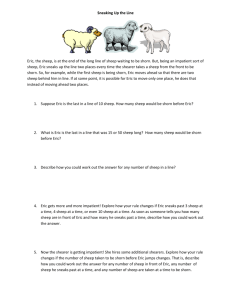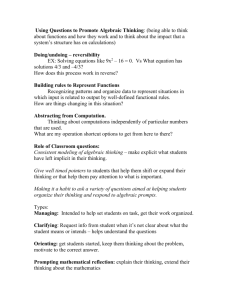Eric the Sheep
advertisement
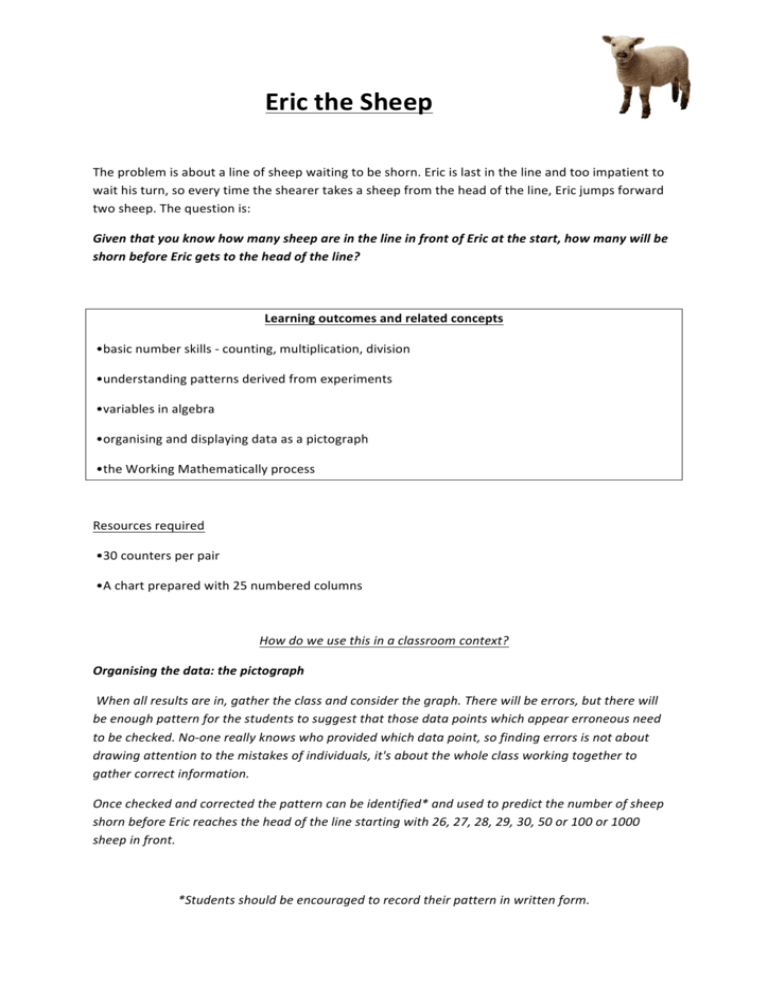
Eric the Sheep The problem is about a line of sheep waiting to be shorn. Eric is last in the line and too impatient to wait his turn, so every time the shearer takes a sheep from the head of the line, Eric jumps forward two sheep. The question is: Given that you know how many sheep are in the line in front of Eric at the start, how many will be shorn before Eric gets to the head of the line? Learning outcomes and related concepts •basic number skills -­‐ counting, multiplication, division •understanding patterns derived from experiments •variables in algebra •organising and displaying data as a pictograph •the Working Mathematically process Resources required •30 counters per pair •A chart prepared with 25 numbered columns How do we use this in a classroom context? Organising the data: the pictograph When all results are in, gather the class and consider the graph. There will be errors, but there will be enough pattern for the students to suggest that those data points which appear erroneous need to be checked. No-­‐one really knows who provided which data point, so finding errors is not about drawing attention to the mistakes of individuals, it's about the whole class working together to gather correct information. Once checked and corrected the pattern can be identified* and used to predict the number of sheep shorn before Eric reaches the head of the line starting with 26, 27, 28, 29, 30, 50 or 100 or 1000 sheep in front. *Students should be encouraged to record their pattern in written form. How can we extend the learning? Cause and Effect This extension develops from the 'what if' investigations: •What if the jumping rule changed? •What if the number of shearers changed? 1. What if Eric was even more impatient and moved past 3 sheep at a time? Now can you predict the answers? 2. What about sneaking passed 4 or 5 or any other number of sheep? 3. What if there were 2 shearers in the situation in Question 1? 4. Choose your own number of shearers and your own passing rule and work out the pattern.
